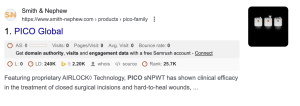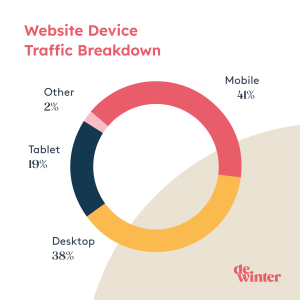How to Increase Visibility of your Healthcare Content
2 years ago | Kate
Essential SEO Techniques for Healthcare Content Marketing
If you’ve been busy updating your website with fresh blogs and product content, you might think you’ve done enough – but have you missed a critical step?
Optimising content for search engines is crucial to drive organic traffic to your website and increase its visibility. Neglecting search engine optimisation (SEO) can result in poor search engine rankings, decreased website traffic, a bad user experience, higher bounce rate, accessibility issues and missed opportunities for engagement. It can even cause search engine penalties, for example, if you have unintentional duplicate content.
Here are some simple but essential techniques specifically for healthcare marketing content optimisation.
1. Conduct Thorough Keyword Research
Before creating content, identify the keywords and phrases your target audience is searching for. You can use tools such as Google Keyword Planner, Ahrefs or SEMrush to find high-volume, low-competition keywords relevant to your topic. Remember to focus on long-tail keywords – the kind of phrases and questions healthcare professionals (HCPs) or patients type into Google – which are more specific and often have less competition. For example, ‘how to treat a diabetic foot ulcer?’ – this reflects a specific medical condition and question that both patients and HCPs might have. Use these keywords in your page title tag and meta description – these are the first things that users see in their search results.
The meta description should be a concise summary of the content, incorporating relevant keywords to entice users to click through, as seen here.

2. Create High-Quality, Engaging Content
Quality content is crucial to success. That means your content needs to be informative and engaging and provide value to your readers. Avoid keyword stuffing and focus on natural, relevant use of keywords. Longer content (1500 words or more) often performs better in search rankings, but make sure it remains clear and concise. Write with your key audience in mind – to get a clear picture of their wants and needs you can create customer personas and write your content to match their pain points and interests. Click to view our example persona for a Tissue Viability Nurse.
3. Optimise Images and Other Media
Healthcare companies should remember that Google treats medical images with particular care due to the sensitive and authoritative nature of healthcare content. Some specific considerations and best practices for how Google handles and ranks medical images are:
- Expertise, Authoritativeness, and Trustworthiness (E-A-T) are crucial factors for all medical content, including images – Google favours content from reputable sources such as hospitals, clinics and medical professionals.
- Ensure your images come from reliable sources and use them in a context that reflects medical expertise.
- High-Quality Images: Use clear, high-resolution images that accurately depict medical conditions, treatments, or procedures. Poor-quality images can negatively impact user trust and engagement.
- Relevance: The images should be directly relevant to the accompanying content. Irrelevant images can confuse users and reduce the page’s credibility.
- Detailed Captions: Use captions to provide additional context and information about the image so users can understand the image’s relevance to the content.
- Interactivity: Consider using interactive images or 3D models for complex medical concepts, which can engage users and enhance understanding.
4. Improve Internal and External Linking
Why use linking in your content? Internal linking is important for search engines as it helps them understand the structure of your website and how different pages relate to each other as they crawl it. Linking to relevant content within your site makes it ‘sticky’ by helping to keep users engaged, and it improves your site’s SEO.
External/outbound linking to other websites from your content is also important. While it might seem counterintuitive to direct your readers away from your site, thoughtful external linking to relevant, high-quality sources, such as leading health journals, helps search engines establish your website’s authority and credibility; it also provides value to your users.
5. Ensure Mobile-Friendliness
Many people search for healthcare information on their smartphones or tablets (currently accounting for circa 60% of website traffic), so ensuring your content is mobile-friendly is essential. Google’s free mobile-friendly test tool can assist in identifying and fixing any issues.

Regularly monitor your content’s performance using tools such as Google Analytics and Google Search Console. Key metrics you should track are organic traffic, bounce rate and keyword rankings – you can use this data to identify what’s working and make informed plans for future content.
By implementing these SEO techniques, you can enhance your content’s visibility in search engine results, attract more organic traffic and, ultimately, achieve your digital marketing goals.
Want to find out more? View our work to discover how we’ve helped healthcare companies to reach their audiences through creative, authentic content, or read our blog The Power of Storytelling in Healthcare for more content inspiration.